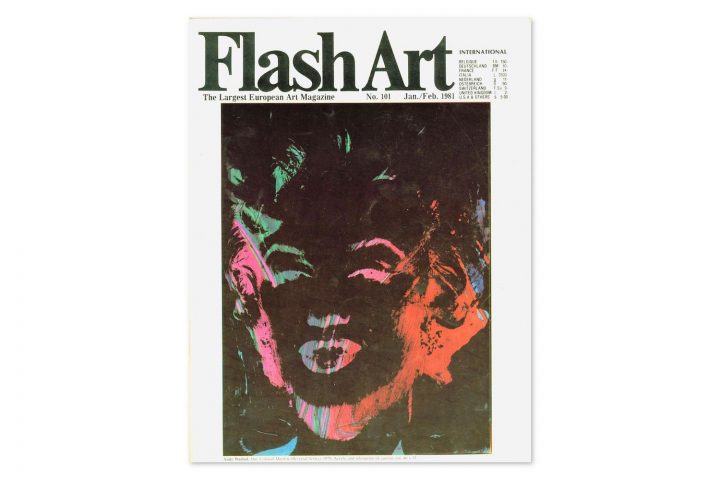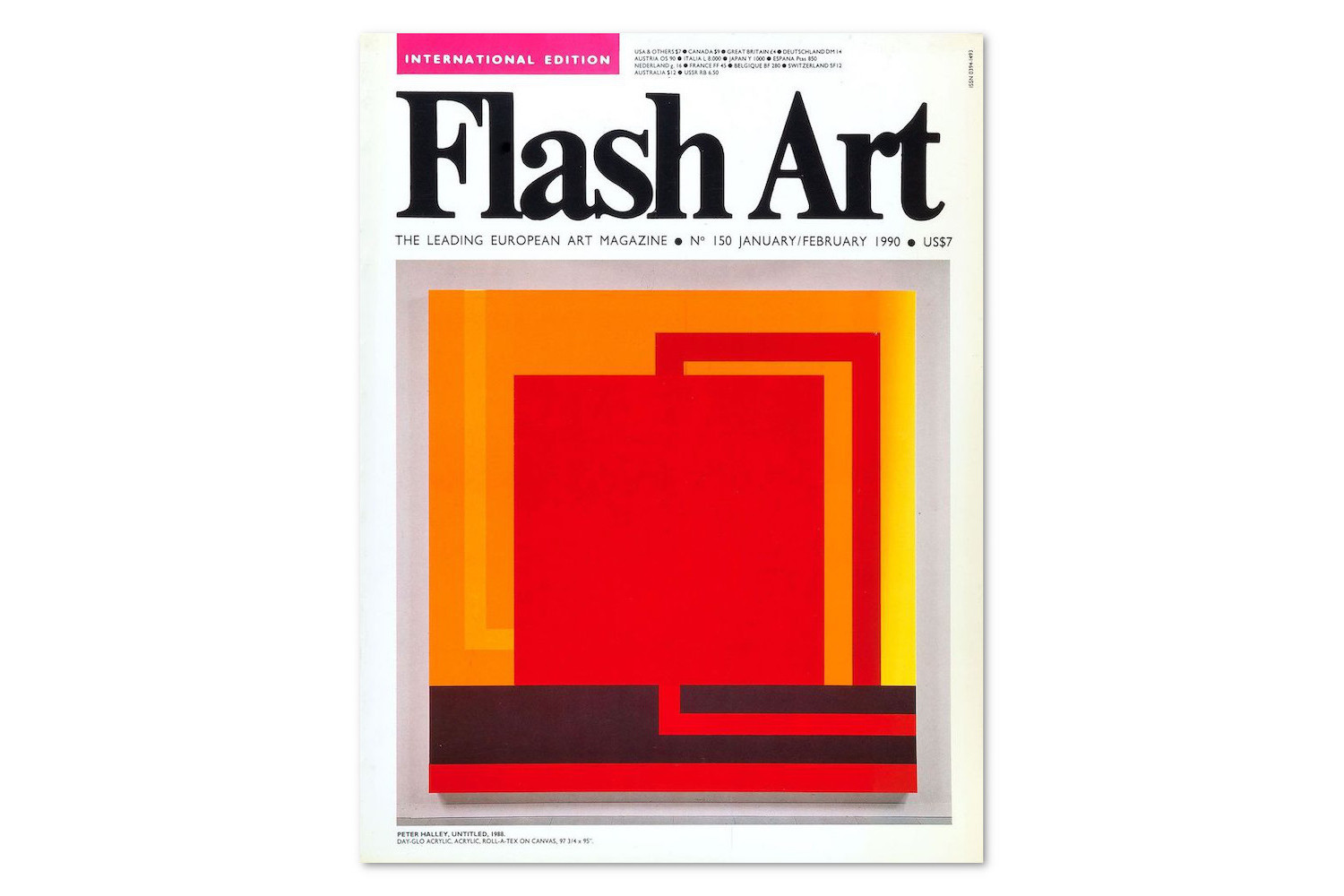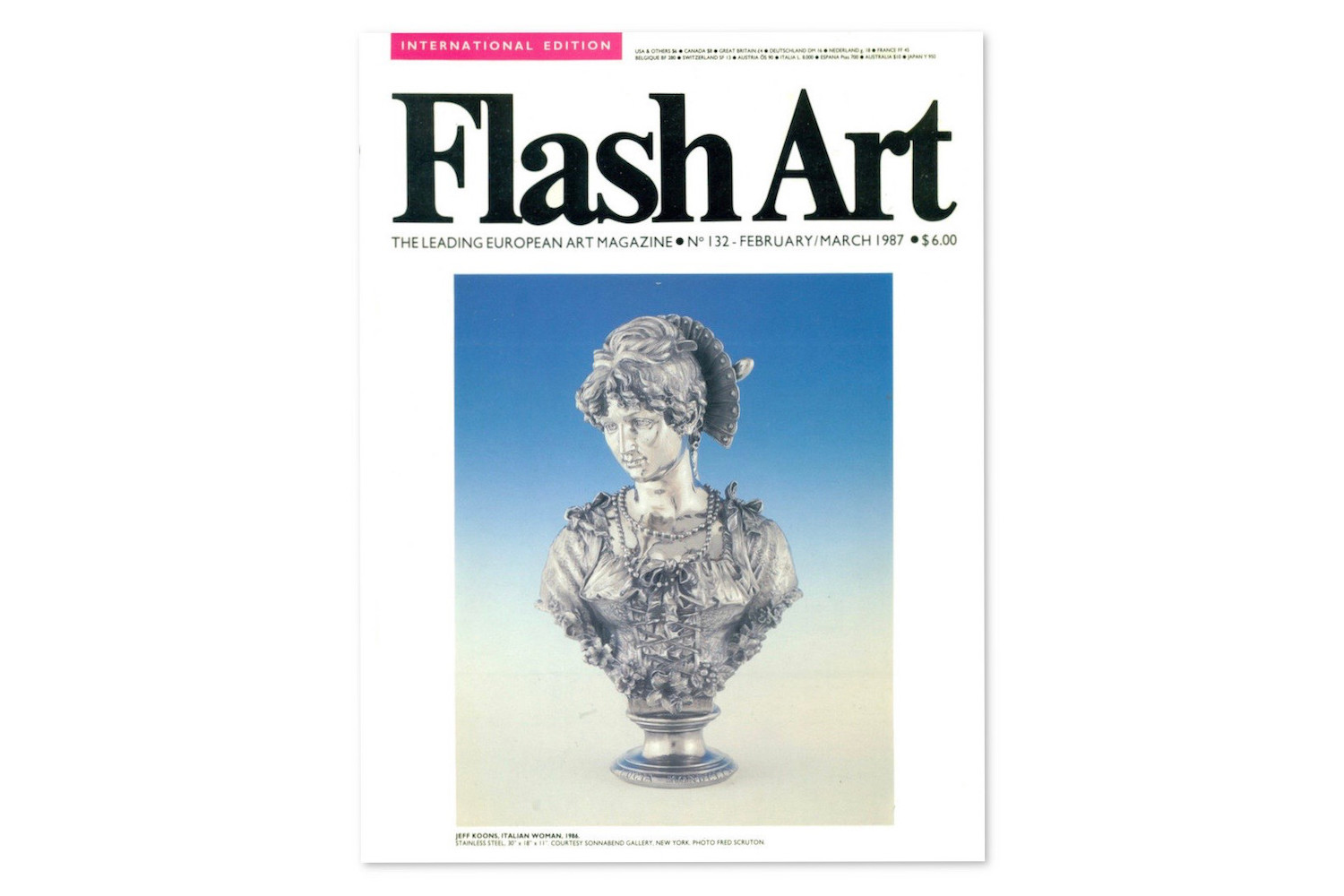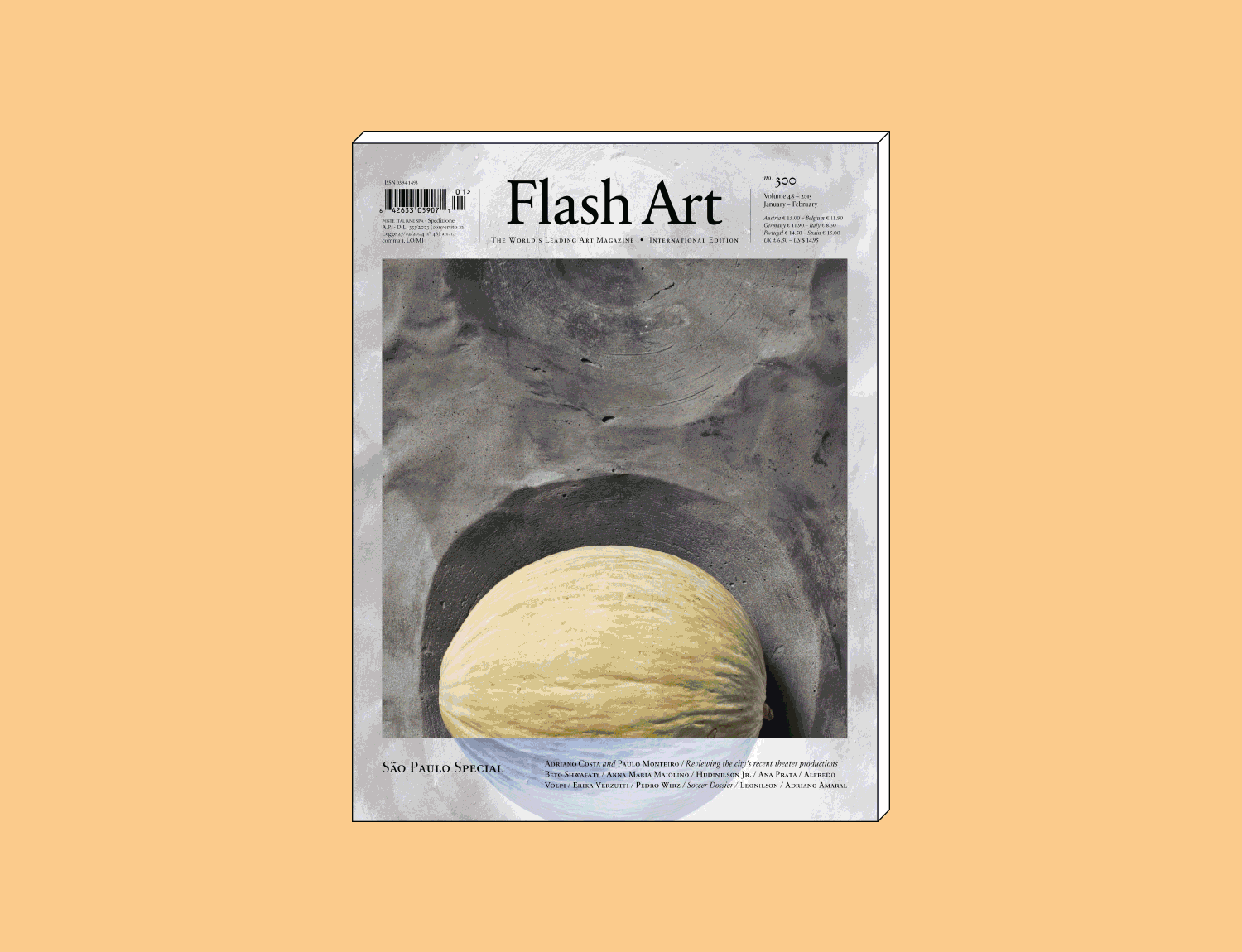Flash Art Covers: the historic covers of Flash Art International told by Giancarlo Politi.

Helena and I were in New York, I think during the Indian summer of 1980 and, as we were used to do, we were visiting galleries and artists’ studios with Bruno Bishofberger in his white stretch limousine. At the time Bruno was a myth: he arrived at JFK from Zurich through Paris with a Concorde, at 8 am in the morning. Waiting for him there was a long white limousine that drove him around Manhattan all day long. In the afternoon, around 6 pm, it would bring him back to the airport where he would take again the Concorde to return to Paris and, in the evening, he was back at home with his wife with whom he had breakfast earlier in the morning. This widely known story had contributed to idealize even more the already famous Swiss dealer, who used to show up all dressed in the typical attire of his Canton.
That day we swung by Julian Schanbel, Francesco Clemente and Robert Kushner. By lunchtime we passed by Andy Warhol’s Factory where, naturally, Bruno wanted to stop. We entered this incredible cavern where everything and everyone was out of place but that still emanated a magic charm.
Andy was at his worktable and came over to hug Bruno, an old friend of his. Bruno introduced Warhol to us, even if I had met him probably ten times already, and told him: “These are Helena and Giancarlo, directors of Flash Art. They would like to write an article about you and dedicate to you the cover of the magazine. Have you got anything special to propose?”. Andy greeted us warmly because, as I already said, we met plenty of times before. “Sure” he promptly answered with great enthusiasm, “I love very much your magazine. I would suggest one of the pieces I’m working on for your show in Zurich next January.”
What was Warhol working on for his main dealer? Since Bishofberger continuously requested new pieces (and he bought quite a lot of them, being Bruno the main financier of Interview, that Andy paid back with works), what did Andy come up with? He decided to realize all his historic works (Marylin, Mao, etc) in negatives, calling them Reversals. That way, Bruno would be able to satisfy his vast European clientele. Therefore, the cover of that issue was a gloomy black Marylin. Gloomy like the charming black exhibition that, in January 1981, was held at Bruno’s gallery in Zurich.




